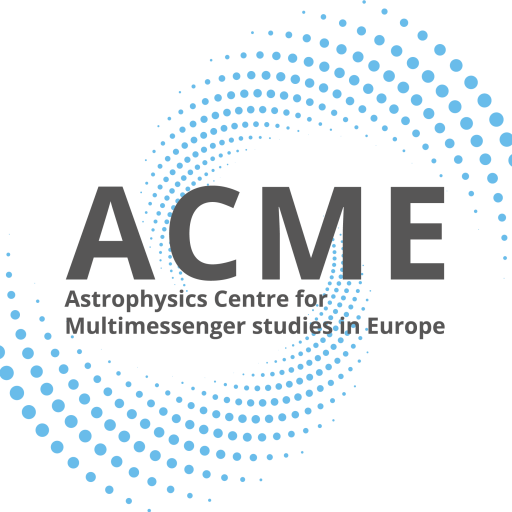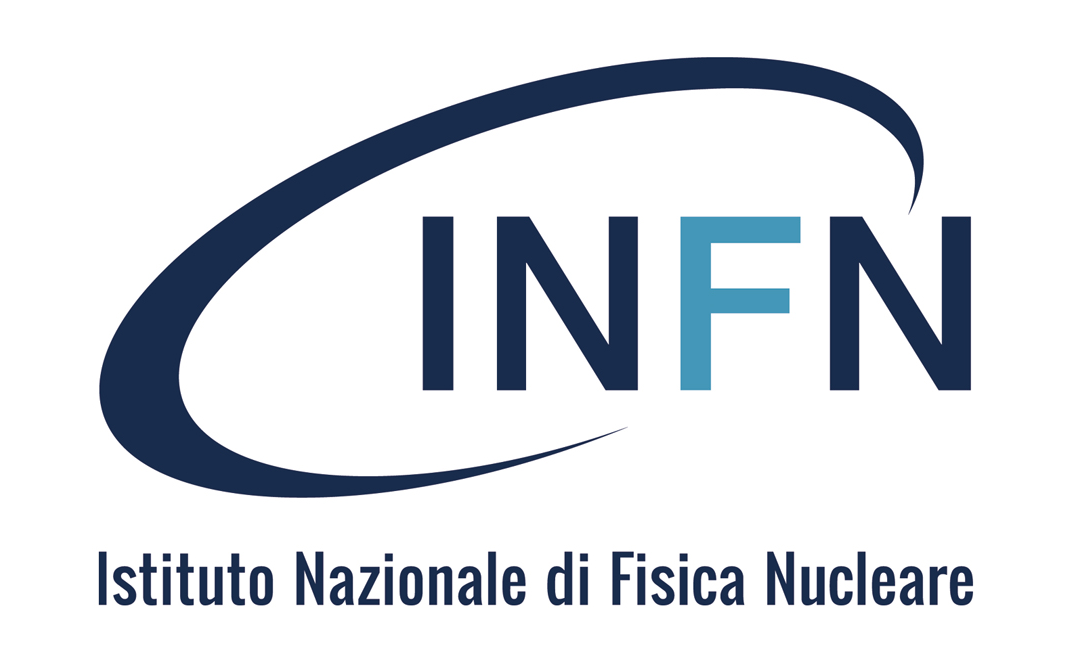INFN is the Italian research agency dedicated to the study of the fundamental constituents of matter and the laws that govern them. It conducts theoretical and experimental research in the fields of subnuclear, nuclear and astroparticle physics. All of the INFN’s research activities are undertaken within a framework of international competition, in close collaboration with Italian Universities on the basis of solid academic partnerships.
Scientific activities are managed by five National Scientific Committees (CSN) that act as advisory bodies to the governing council. CSN2 covers astroparticle physics performing studies of cosmic background radiation, cosmic rays, neutrinos, GWs, VHE gamma rays, rare particles, and particles that are thought to constitute dark matter. INFN drives the GW search and funds the Virgo experiment.
Main contact for TNA call: Giancarlo Cella
Available expertise
The group comprehends scientists with strong expertise on gravitational wave (GW) and multi-messenger (GW and photons) data analysis, as well as multi-messenger modeling of transient sources. They are active members in the LVK collaborations, ET observatory, GRAWITA, ENGRAVE, IVOA, CTA and Fermi with particular interest in the MMA aspects. In the following we give a list of the available expertise, referencing the relevant subgroup INFN Firenze-Urbino and Università di Firenze
-
low-latency pipelines for modeled transients signals
-
monitoring interferometer noise status.
INFN Perugia and Università di Perugia
-
electromagnetic and neutrino follow-ups of GW events in the context of the Virtual Observatory Standards and Tools applying the FAIR principles, in particular concerning
-
visibility, allocated time and pointing sequences from a network of facilities
-
Footprints telescope tilings
-
Temporal and spatial real-time/archive transient researches
-
2D and 3D gravitational-sky localizations to define followup strategies: galaxy targets vs wilde field observations.
-
handling large galaxy catalogs with a hierarchical tiling mechanism
-
parsing GCN/VOevent contents to set user-defined follow-up strategies
-
INFN Pisa and Università di Pisa
-
parameter estimation for GW events (transient events);
-
evaluation of foreseen GW detector network performances for the planned observing runs, and in particular estimate for probability of multimessenger events.
-
modeling of multi-messenger (GWs and gamma-rays) emission from merging binary systems of compact objects
-
investigation of the GW observing scenarios under different assumptions; this includes studies relevant for the preparation of observational proposals for the electromagnetic follow-up of GW transient events
-
public GW alerts sent by the LVK collaboration
-
usage of public GW data analysis tools
INFN Roma 1, Università La Sapienza Roma, Università di Trento, Universitá di Parma
-
general searches for GW transients and time-resolved spectroscopy of GW transients
-
GW data analysis for persistent and quasi-persistent GW signals
-
unmodeled transient searches using coherent WaveBurst
-
low latency searches for unmodeled transient using coherent WaveBurst
-
compact binary coincident and coherent searches, including the construction and validation of template banks
-
joint gravitational-wave and gamma-ray searches
-
gravitational waves data analysis for persistent and quasi-persistent GW signals
-
low latency alert infrastructure of the LVK collaboration
-
low latency trigger significance
-
trigger public data access quality and their interpretation
-
general searches for GW transients and time-resolved spectroscopy of GW transients
INFN Roma Tor Vergata, Università di Roma Tor Vergata
-
GW astronomy to that of high-energy gamma rays, with particular focus on data analysis and modeling related to electro-magnetic counterparts of GW events and high-energy related fundamental physics
-
high-energy analysis of GW follow ups using the publicly available Python package Gammapy: localization, spectral analysis and production of light curves of GRB
-
parameter estimation techniques for electro-magnetic counterparts of GW – prompt and afterglow emission of GRBs, kilonova.
-
GW alert contents
-
observing scenarios
Available tools
Coherent WaveBurst (https://gwburst.gitlab.io/) Coherent WaveBurst (cWB) is a data analysis pipeline designed for detection and reconstruction of gravitational-wave (GW) transients with the worldwide network of GW detectors. By using wavelets, it explores the data time-frequency structure and finds generic GW signals with weak (or none) assumptions on the source model.
FIGARO (https://academic.oup.com/mnrasl/article/517/1/L5/6692889) a ready to use and publicly available software tool that relies on Bayesian nonparametrics. FIGARO is designed to run in parallel with parameter estimation algorithms to provide updated three-dimensional volume localization information. Differently from any existing algorithms, the analytical nature of the FIGARO reconstruction allows a ranking of the entries of galaxy catalogues by their probability of being the host of a gravitational wave event, hence providing an additional tool for a prompt electromagnetic follow up of gravitational waves.
GWsky (https://www.sciencedirect.com/science/article/pii/S2213133722000026) is a suite of tools based on Virtual Observatory standards designed to efficiently compute gravitational-wave sky localisation and its visibility for a network of observatories. The methodology allows for simultaneous spatial and temporal operations between localisation maps of transient candidates, gravitational-wave sources, and high-energy or neutrino events. GWsky enables users to perform queries from IVOA data providers, such as VizieR, facilitating access to a wide range of astronomical catalogues and images for multi-messenger and cosmological research. Furthermore, these tools allow for the generation of accurate sequences of telescope pointings (tiles), and prompt adjustments of the observing schedules.
GLADEnet (https://www.aanda.org/articles/aa/abs/2024/04/aa48073-23/aa48073-23.html) is a web interactive tool that allows us to identify catalogued galaxies and to assess the incompleteness of the catalogue of galaxies in real time across the gravitational-wave sky localisation.
Gammapy (https://gammapy.org/) is an open-source Python package for gamma-ray astronomy built on Numpy, Scipy and Astropy. It is used as core library for the Science Analysis tools of the Cherenkov Telescope Array Observatory (CTAO), recommended by the H.E.S.S. collaboration to be used for Science publications, and is already widely used in the analysis of existing gamma-ray instruments, such as MAGIC, VERITAS and HAWC.
GRANITE is a rapid and easy to use parameter estimation and model selection infrastructure for GW data analysis. Its integration with search tools and rapid localisation tools such as FIGARO is foreseen
PyCBC (https://pycbc.org/) is a software package used to explore astrophysical sources of gravitational waves. It contains algorithms that can detect coalescing compact binaries and measure the astrophysical parameters of detected sources. PyCBC was used in the first direct detection of gravitational waves by LIGO and is used in the ongoing analysis of LIGO and Virgo data. PyCBC was featured in Physics World as a good example of a large collaboration publishing its research products, including its software.
Involved scientists














